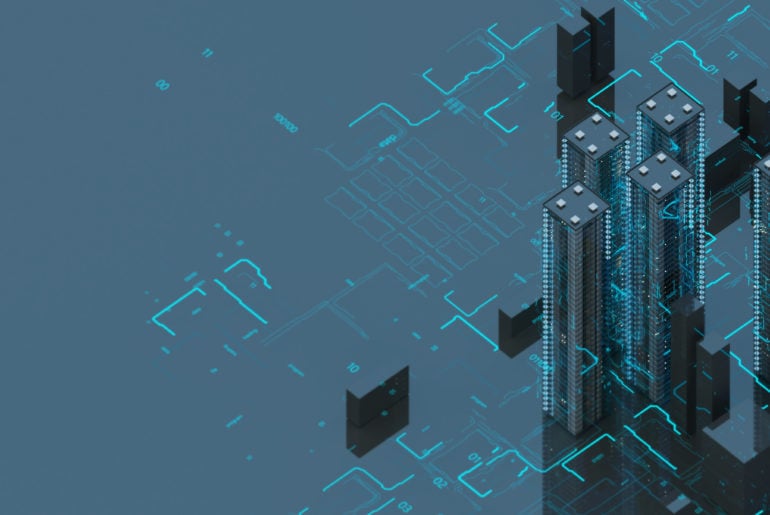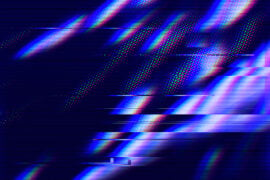One minute ago, at 11 am CET on August 8, 2018, the German classification board (“USK”) announced that it will from now on accept applications for the classification of video games which include swastikas and other so called “nazi symbols”. The decision will most likely be the beginning of the end of an era in which video games which include “unconstitutional” symbols had to be heavily altered for their German release. The decision has significant impact on various video gaming companies and also provides the opportunity to re-release games in Germany that are still popular and/or suffered from lower sales due to the forced release of an edited version which often goes hand in hand with massive critic by German gamers and unpopular geoblocking measures of the original game version. This short article explains the USK decision, its impact and what steps can or should be taken next.
Nazi symbols in video games under German law
I have already summarized the legal situation in relation to nazi symbols and video games in another short article in relation to a recent development a couple of weeks ago (German Attorney General: Game with Swastika not prohibited; constitutes art, May 8, 2011). This explanation is reused here with some amendments:
1. Applicable law
Distributing or using nazi symbols is prohibited by Sec. 86a German Criminal Code (“StGB”): Using symbols of unconstitutional organizations. A semi-official translation[1] of the law reads as follows:
(1) Whosoever
1. domestically distributes or publicly uses, in a meeting or in written materials (section 11(3)) disseminated by him, symbols of one of the parties or organisations indicated in section 86(1) Nos 1, 2 and 4; or
2. produces, stocks, imports or exports objects which depict or contain such symbols for distribution or use in Germany or abroad in a manner indicated in No 1,
shall be liable to imprisonment not exceeding three years or a fine.
(2) Symbols within the meaning of subsection (1) above shall be in particular flags, insignia, uniforms and their parts, slogans and forms of greeting. Symbols which are so similar as to be mistaken for those named in the 1st sentence shall be equivalent to them.
However, an exemption applies under the following circumstances (emphasize added):
Subsection (1) above shall not apply if the propaganda materials or the act is meant to serve civil education, to avert unconstitutional movements, to promote art or science, research or teaching, the reporting about current or historical events or similar purposes.
2. The infamous Wolfenstein 3D court decision
In summer 1994 a person distributed the video game classic Wolfenstein 3D via an old telephone based mail box system (Thule Network). In Wolfenstein 3D the player has to fight nazis and ultimately even kills Adolf Hitler. As Wolfenstein 3D takes place during the time of the Third Reich, the game shows a great number of nazi symbols. In 1994, the person who distributed the game was convicted by the Local District Court Frankfurt/Main for violating Sec. 86a StGB. The defendant appealed the decision and the case was ultimately brought to the High District Court Frankfurt (case no. 1 Ss 407-97). In Germany, High District Courts rank second in the court hierarchy (with the Federal Supreme Court being the only higher court). On March 18, 1998 the High District Court Frankfurt confirmed the decision of the first level court. The decision was, inter alia, based on the following reasons (loosely translated):
“The purpose of Sec. 86a StGB demands that unconstitutional symbols are not shown in computer games. It is irrelevant that the prohibited insignias and symbols in Wolfenstein 3D are located in rooms which belong to the enemy. If such a use of prohibited symbols in computer games would be allowed it would hardly be possible to prevent an increasing use of such symbols in public which would contravene the purpose of Sec. 86a StGB. In particular for children and adolescents, computer games are an attractive and increasingly used form of play. If they would be lawfully confronted with symbols of national socialist organizations in video games, this could lead to them growing up with these symbols and insignias and thereby becoming used to them, which again could make them more vulnerable for ideological manipulation by national socialist ideas.”
3. Consequences
As known by most video game developers and publishers, the practical consequences of the 1998 Wolfenstein 3D decision were significant. In particular video games which are set during the time of the Third Reich or WWII often include nazi symbols to create a realistic and atmospheric environment, similar to movies which are set in this time period. However, due to the Wolfenstein 3D decision until today no such video game is eligible for classification by the USK in Germany. Unrated games on the other hand are not sold by most German stores. Furthermore, obtaining an age-rating is typically required for (physical) console releases due to the publishing policy of most console operators. Thus, in order to obtain an age-rating and to avoid criminal prosecution, the video gaming industry saw itself forced to “clean” all video games with swastikas and other critical symbols for their German release by removing every single symbol in a costly and time-consuming post-production process. These edited game versions often suffered from bad sales and received negative reviews by German players. For this reason and to spare costs for later changes, some companies decided not to include critical symbols in their games anymore and to go for a globally edited version right from the start of the development. Because nazi symbols in movies are generally tolerated in Germany, this led to dubious situations where, for instance, the movie Indiana Jones was shown without edits during morning hours while the identically titled cartoonish video game, which follows the same story, only showed black holes instead of swastikas.
Despite the industry’s efforts to remove all symbols from its games, accidents happened regularly which led to several video games being released in Germany that still included one or two symbols which were overlooked during the post-production process for reasons of human error. In all these cases, the German editions were withdrawn and trashed before a new fully cleaned version was re-released, multiplying the localization costs (clean, trash, clean again). Additionally, many video game companies suffered from substantial secondary implications: To avoid criminal prosecution in Germany some companies decided to geoblock the original (unaltered) version of their games for the German territory. This practice caused several large-scale outcries by German gamers and significant reputational harm in many cases because German gamers who were not able to import the original version by digital download or to unlock an already bought (physical) import version were blaming the industry for punishing its customers instead of taking a stand against the German ‘censorship practices’ in court.
b. USK practice in relation to games including swastikas and similar symbols until now
Until now, applicants applying for a classification had to explicitly ensure via the USK application form that the video game submitted for classification did not include any unconstitutional symbols such as swastikas. With this procedure the USK de facto excluded games which showed critical symbols from the possibility to be classified. If a publisher tried to submit a game which included swastikas to the USK, classification was refused respectively the game was not allowed for the classification process in the first place.
4. Criticism by legal scholars and experts
For years now, German legal scholars and practitioners, including myself, have criticized the Wolfenstein 3D decision with its general statements and implications as incorrect, outdated and in violation of the constitutional right to freedom of art. In early 2015, I published a legal article on the subject in the Computer and Law journal (Computer und Recht, 2/2015, p. 92 et seq.), mainly criticizing the decision for not taking into account the statutory exemption of the promotion of art (see the wording of the exemption above). In June 2016, I repeated my concerns in an extensive interview published by the German video game magazine Gamestar (Engl. version via Google website translation, 3 pages). While movies and games are not the same (one being interactive, the other purely passive) it nevertheless seems hard to justify why movies are generally getting a free pass but video games do not, in particular considering that the production processes of modern video games and movies are similar, with countless artistic and creative people being involved. In relation to other legal matters, several German courts have already decided that video games constitute a form of art. This includes in particular court decisions in relation to blacklisting decisions concerning video games, which are subject to an identical statutory art exemption (Sec. 18 (2) No. 2 Youth Protection Act) as it is provided in Sec. 86a StGB. In light of this, the fact that the art exemption was not even mentioned in the Wolfenstein 3D decision seems more than questionable.
Additionally, the legal framework applicable to video games has changed significantly since the Wolfenstein 3D decision in 1998. Back then, USK ratings legally only had the status of recommendations of a private body. This was changed in 2003 with the enactment of the new Youth Protection Act. USK ratings now have the same legal standing as movie ratings issued by the FSK. While both the USK and the FSK are technically still private bodies, in both cases the classification decisions are now taken over by the 16 German states by means of an official procedure. Through this procedure, the initially private classification decisions obtain the rank of an administrative decision. The USK and the FSK are perfectly capable of assessing any potential harm to minors or unconstitutional or unlawful content in video games or movies and reacting to it by refusing classification. Based on these arguments, I consider it very likely that a German court would nowadays decide against a general prohibition of critical symbols in video games and would instead apply the statutory exemption of art.
5. Public reaction and awareness
The main reason why video game companies were reluctant to challenge the general prohibition of critical symbols in video games was the risk of a potential public disaster. Who would like to be the company taking a stand and fighting for its right to have nazi symbols in video games? No need to explain this any further. While such an outcry would surely not have come from the German gamer base which typically despises any form of censorship the general fear of a public disaster was surely not unjustified in terms of the remaining public which is not interested in video games. Aside from German gamers and people working in the industry, so far the prohibition of nazi symbols in video games was not subject to greater discussions in Germany. Of course, whenever a new “cleaned” game was released, the German video gaming press ran several articles about the subject and video gamers complained about the situation. However, the subject did not cause greater public attention amongst non-gamers or on a political level so far. That was at least the case until last year’s release of Wolfenstein II: The New Colossus. Being set in a dystopian world where the Third Reich has won the war, the game of course includes a large number of nazi symbols. As usual, the German version was significantly altered. All prohibited symbols and references to the Third Reich were removed. This included renaming Hitler to “Heiler” (Healer), removing his mustache and having him being addressed as “My chancellor”.
The changes made to Wolfenstein II: The New Colossus were so significant that it ultimately sparked the interested of the German mainstream media. For several weeks the topic became subject to a so far unprecedented level of media coverage (see for instance an Article by Spiegel-Online where I was asked for my opinion: Engl. version via Google website translation). However, surprisingly the center of the public attention was not that the original version of the game provides hundreds of symbols which are prohibited in Germany but instead that due to the German prohibition and the extensive changes that were made to the German version of the game, the impression was given that Germany tried to cover up its historic responsibility and guilt by prohibiting and censoring art beyond necessary means. Especially one altered dialogue triggered significant public attention: In the original version Hitler speaks about the player’s character and makes a reference to the Jewish heritage of his (the character’s) mother. It is also revealed that his father betrayed his mother and handed her over to the nazis and that she later died in a concentration camp. However, in the German version any reference to the Jewish heritage was removed for consistency purposes. Additionally, the mother dies through imprisonment and not in a concentration camp. The fact that a German video game version of all things removes all references to Jews and somehow trivializes historic events for reasons of a general prohibition of nazi symbols was almost unanimously considered as tasteless and disproportionate by the German mainstream media. Allover, the general tone was that video games with serious stories should not be censored.
The USK’s decision
By today’s decision the USK announced that it will from now on accept video games which include swastikas and other illegal symbols to be submitted for classification. In other words, the old practice that video game publishers must ensure that no critical symbols are included in the submitted game is history. However, it should be noted that the change of the USK’s practice does not automatically mean that every game including problematic symbols will now automatically be classified. Instead any submitted game will still be reviewed via the normal classification process, with the difference that the USK will now also consider whether the included symbols fall under the statutory exemption of serving civil education,averting unconstitutional movements, promoting art or science, research or teaching, the reporting about current or historical events or similar purposes. In doing so, the USK will apply the standards that have been developed by German case law and the legal literature.
Background
The USK’s decision is mainly the outcome of (1.) the changed reflection of the old Wolfenstein 3D decision by the prevailing opinion amongst legal experts and (2.) a long discussion process behind the scenes involving the German Video Game Association (GAME) and the responsible stakeholders from the USK, in particular the representatives of the German states and their superior authority. The latter parties are primarily responsible for the official process by which the initially private USK classification decisions are taken over by the states in order to “transform” them into official administrative decisions. For a long time, mainly the German state representatives at the USK, respectively their superior authority, refused to classify games with critical symbols due to the old Wolfenstein 3D decision. However, since such decision is nowadays almost unanimously considered as incorrect and outdated by legal experts – which was recently even confirmed by a German Attorney General (quoting the above mentioned Computer and Law article of mine) – the responsible stakeholders now reconsidered their position.
Implications of the USK decision – Which games can and should be (re-)submitted?
Since the USK decision is still recent and no games with critical symbols were classified in the past, no settled practice exists which can be applied by the USK. The USK therefore points out that such decision-making practice must now first be developed by means of future applications and by applying known exemptions to the criminal law which prohibits unconstitutional symbols. In relation to video games, the most important exemptions that need to be named are the exemption of promoting art, similar purposes and also serving civil education. While the latter will mainly help a few serious games (e.g. the often referenced Attentat 1942), the majority of video games will most likely be assessed under the promoting art and similar purposes exemptions. In light of these exemptions, all games with film-like, satirical and dystopian settings, or games which feature a comprehensive story as well as games which are generally subject to significant production efforts, including various artistic processes (concept design, graphic design, music composition, acting etc.) have good chances to be classified in future. Realistic chances (by applying a case law exemption) also have games where nazis are clearly portrayed as the enemy or where nazi ideas are subject to critical reflection. Lastly, good arguments exist that older games which can now be considered as video game classics are eligible for classification based on the idea that such games are a cultural asset and therefore also constitute art.
Video game companies can in particular consider resubmitting the original version of video games that were so far only released as altered version in Germany and which are still popular and generate noteworthy (digital) sales. Several popular video games were never released unaltered in Germany and are currently subject to strict geoblocking measures preventing German customers from purchasing them. This does not only concern some of the most well-known AAA games of recent years but also several video game classics such as Indiana Jones or Commandos. By re-releasing such games, video game companies will not only please German gamers but will also generate positive media coverage and – most importantly – profit from increased sales and smaller sales boosts shortly after the German re-release. Lastly, it is important to help the USK to develop a consequent decision-making practice to cement the new practice.
Nevertheless, it should be noted that there are also some games which will most likely not be able to obtain a rating even after the change of the USK practice. An example would be the video game skate 2 (2009) which is a typical skateboarding game and was rated USK 12 in Germany. However, for the German release some symbols (a sig rune) which are displayed on the clothes and skateboards of some of the included skateboarders had to be removed. The sig rune was included in the game as it is the company logo of a popular US skateboarding firm whose skateboarders are featured in the game. However, using unconstitutional symbols on toys and clothes is exactly what the German criminal law on unconstitutional symbols intents to prevent. Thus it is unlikely that games like skate 2 will be classified by the USK.
What happens if a game is nevertheless refused classification by the USK?
As explained above, the USK practice does not automatically mean that any game which includes problematic symbols will automatically be classified. The USK will now focus on developing a reasonable decision-making practice. During this stage it is important to avoid adverse decisions in form of classification refusals. Thus, publishers should first carefully assess whether the game they intend to resubmit for classification falls under the exemption of the German criminal law on unconstitutional symbols. If there are solid reasons to submit the game and the classification is nevertheless refused, companies can and should appeal the relevant decision by means of the USK appeal process. USK decisions can be appealed twice. The second appeal requires an application by the German GAME association. In case the applicant applies for a second appeal, the USK automatically brings the case to the GAME association for it to decide whether it supports the second appeal and applies for it. However, this is typically only a formality. Additional costs for appealing the decision do not occur. The game will always be re-reviewed by a new USK committee. Companies have the right to lodge arguments to the USK and to send a representative.
Could a German court take a different view on a classified game? What would be the consequences?
USK ratings generally do not prevent German courts from taking a different view than the USK and the administrative body behind it. Thus, if the USK comes to the conclusion that a submitted game does not violate Sec. 86a Criminal Code and consequently classifies the game, a German court could nevertheless come to a different decision. However, given the prevailing opinion amongst legal experts, – which was recently confirmed by a German Attorney General – the risk in this regards seems acceptable. Most importantly, as administrative decisions USK ratings provide protection against criminal prosecution, provided the distribution of the game is immediately ceased. Thus, in the worst case, the distribution of the game must be stopped again. In case the game is also distributed physically, the court also has the option to seize all copies of the game in Germany by means of a general court order. However, such a decision could be challenged in court with reasonable effort and chances.
Comments for platform providers
1. Games classified by the USK
Platform providers (e.g. console marketplaces, app stores and digital distribution platforms for PC games) which so far geoblocked games with critical symbols in Germany can deactivate potential geoblocking measures for all game versions with critical symbols provided these have been classified by the USK. As explained, the classification decision serves as protection against criminal prosecution. This also applies to platform providers. Platform providers should also review their current terms and conditions to ensure that they do not exclude benefiting from the new USK practice (e.g. if specific provisions for Germany exists which exclude the release of games with certain symbols, regardless of a USK classification being obtained by the publisher).
2. Games without USK classification
Nowadays, most video games are only distributed digitally. These games are often not classified by the official USK process as this is not legally required in Germany (although possible). The official USK classification process may not be confused with IARC ratings that are issued by USK.online. The latter is (legally) a different organization than the USK despite both institutions residing under the same roof. In terms of non-classified games, platform providers should – for now – stick to their current practice of geoblocking games which include critical symbols for the German territory. Howeve,r technically, such practice is not necessary as the statutory exemption for illegal symbols applies in any case and does not require a positive decision by the USK. Thus, any platform provider could always claim in defense that the relevant game falls under the statutory exemption and is therefore not illegal. Since there are robust arguments that most (normal) games indeed fall under the statutory exemption, platform providers could theoretically consider ceasing their geoblocking activities in relation to unrated games with symbols for the German territory. However, in case a court would take the view that a certain game does not meet the requirements of the statutory exemption, the platform provider would not be protected against criminal prosecution if the game was also rated by the USK (and provided the game is taken down immediately). For this reason, unrated games with unconstitutional symbols should not be made available in Germany for now (at least until the new USK practice becomes widely accepted which will take some time).
[1] https://www.gesetze-im-internet.de/englisch_stgb/englisch_stgb.html#p0877



